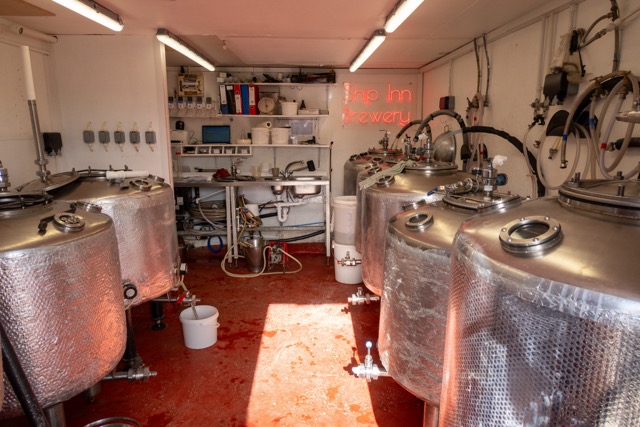

I first started with home brewing (excluding exposure to my parent’s wine-making) about 30 years ago. It didn’t last long and was soon forgotten. Moving the clock forward to 2013 and a casual chat over the garden fence with a neighbour got me thinking again; he’d just started with a beer kit and I thought it worthy of investigation. I was soon into the kits, modifying kits, extract brewing and then all-grain, full-day brews.
Mead House – I needed a name for my home brewery, just for a bit of fun, and came up with the name.
The arrival of the pandemic put paid to my brewing. Although I continued working frontline, just about everyone else seemed to be furloughed – short of a hobby. My regular supplier appeared to be perpetually out of stock of main items, and what was in stock had extortionate pricing. I’d reached the point where I had been considering kegging my brews, but CO2 couldn’t be sourced locally. I continued until early 2021 with a couple of small brews until my reserve ingredients ran out. Retirement arrived and with all the brewing equipment packed away in the shed, I never got around to starting again.
A friend who had started dabbling in the ancient art, started me thinking again. The fire was finally ignited whilst on holiday in Northumberland; talking to the brewer at the Ship Inn – I still had half an idea of what to do, and his enthusiasm rubbed off on me. Time to tidy out the garage and find a new supplier (the one that I had used for many years had disappeared, I guess another victim of the pandemic).

Stuff that hasn't got a home elsewhere.
2025-02-08 Major Problem - Brix conversion - I'd dropped a massive bollock (definitely remember this as a medical term from my time in the NHS) by not using the correct tool for converting Brix to SG when the wort had started fermenting; no wonder my brews were falling short on ABV.
2025-01-07 - Oxebar Damage I'd managed to drop one of the empty 8L Oxebar kegs, wet hands and a smooth surface. Not a major problem unless, as I did, it gets dropped neck first onto a hard surface. These kegs don't use washers but rely on a smooth surface-to-surface seal; I'd damaged the smooth surface. As a result, the tapping head leaked.
A temporary fix was to use PTFE tape around the top, this worked but was inconvenient.
Hopefully, I've managed a permanent fix today by using fine abrasive paper, on a square block, to carefully remove the damaged section; using the square block has kept the surface flat. The keg stood some pressure so far with no obvious signs of leaks.